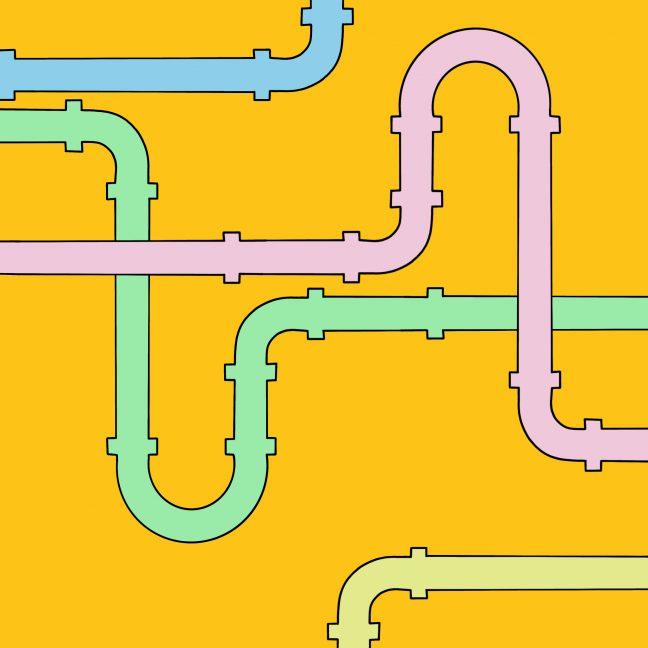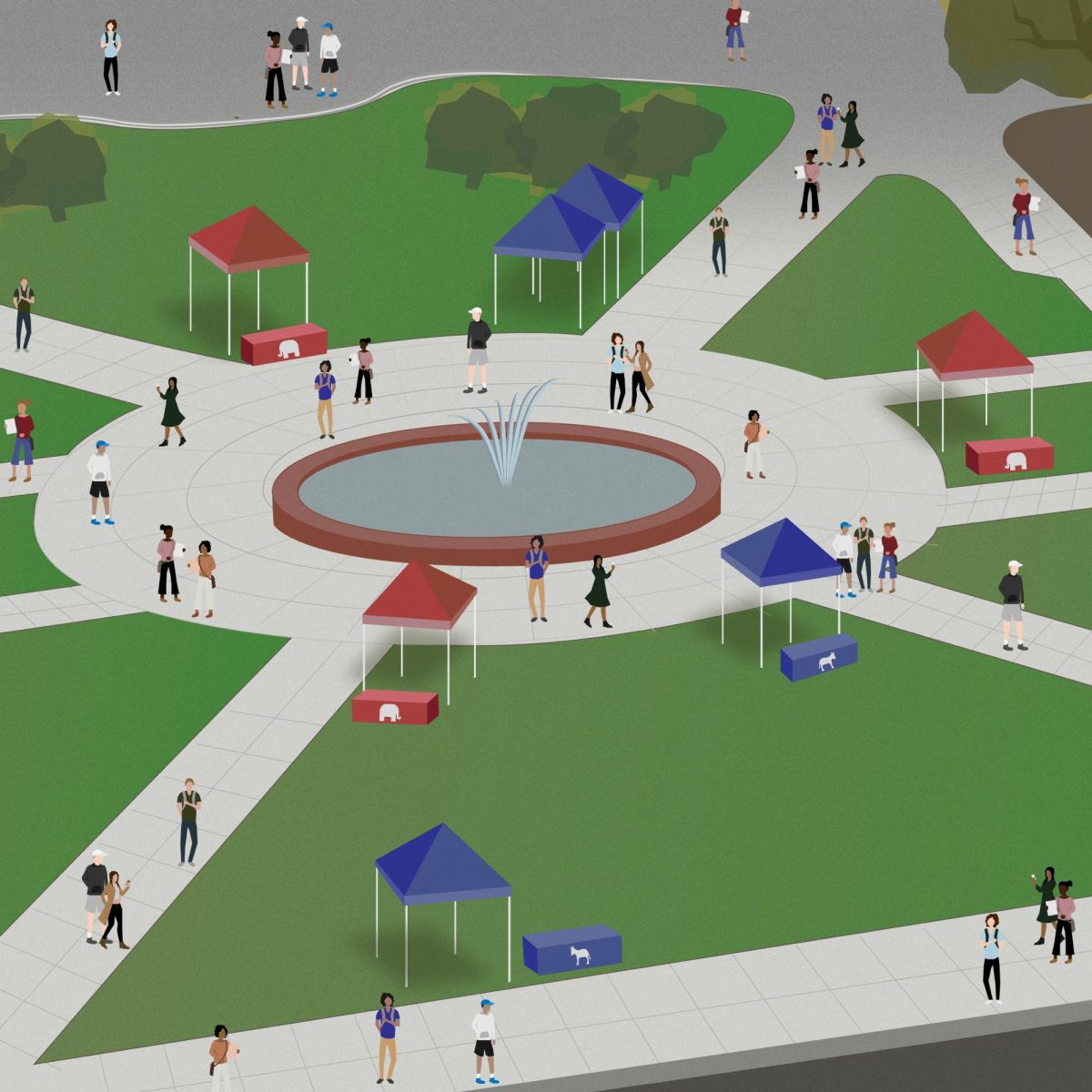When you first arrive at the Welcome Center in Palisade, one of several water protector camps that have sprung up in northern Minnesota along the route of the Line 3 oil pipeline, someone will ask you if you want to be green, yellow or red.
If you choose to be in the green tier, it means you do not want to be arrested, and organizers will direct you to stand in areas where you are not trespassing. The yellow tier calls for more escalated action and carries the risk of citation and arrest. Choosing to be in the red tier, however, means you are planning to and are prepared to be arrested.
Those in the red tier commit to continuing their piece of direct action against the pipeline until they are forced to stop by law enforcement.
Delay, delay, delay
Activist and senior at College of Saint Benedict in Minnesota Melissa Burrell has only gone as far as the yellow tier and is well aware of the consequences of going further.
“There have now been over 200 people who have been arrested at these different spots with construction,” Burrell said.
Direct action is a stalling technique that takes the form of non-violent protests at construction sites to delay the pipeline and generate as much media attention as possible in the process, Burrell said.
Activists have chained themselves to construction equipment and crawled and hid inside of the pipes until law enforcement forced them out, Burrell said. She brought up one instance where activists managed to bring two massive pianos onto the construction site and played music for an entire morning.
Recently, Indigenous water protectors from the Giniw Collective built and prayed inside a waaginogaaning, a traditional Anishinaabe structure they set up on the construction site, delaying construction for several hours.
“All of these things are just to delay construction,” Burrell said. “The more hullabaloo that law enforcement has to go through to try and take someone out of a pipe or to take someone off of a piano, then that is taking a lot of time and equipment is obviously not able to run while that is happening.”
A long history of controversy
Protesting North America’s fossil fuel pipelines is nothing new. Oil was discovered in Canada in the 1850s and construction of pipelines followed soon after. For over a century, a network of trains, pipelines and ships have been transporting crude oil from the tar sands of Alberta, Canada down into the Midwest.
Out of the 2.85 million barrels of oil Canada exports per day, a whopping 97% ends up in the U.S. Today there are over 840,000 kilometers of pipelines in Canada, but as far back as the 1970s, proposals to expand that network have often run up against Indigenous claims to land and environmental concerns.
In the last decade, as concern over carbon emissions rise, oil pipelines have also come to represent a tangible and symbolic manifestation of climate change, becoming a major target for environmentalists.
After nearly a decade of back and forth, environmentalists and Indigenous activists succeeded in getting the Biden administration to block the permit on the Keystone XL Pipeline. The fight surrounding the Dakota Access Pipeline, however, is ongoing.
Line 3, owned and operated by the multinational energy corporation Enbridge, starts in Alberta and cuts its way through North Dakota and Minnesota before ending in Superior, Wisconsin. Of the roughly 1,000 miles of pipeline, only 14 lie in the Badger State.
Built in 1960, the Line 3 pipeline has aged significantly. Initially built to transport 760,000 barrels of oil per day, the pipeline has become corroded to the point where it can only support around half that capacity. For perspective, that is equivalent to a fifth of Canada’s daily oil export to the U.S. Replacing Line 3 would restore the pipeline to its historic capacity and reduce the need to transport crude oil by rail, Enbridge spokesperson Juli Kellner said in an email.
Construction of the replaced Wisconsin section ended in 2017, and by December 2020, Enbridge finished the North Dakota section as well. The only unfinished portion is the 337-mile Minnesota segment, whose construction began as Enbridge wrapped up in North Dakota.
Currently, Enbridge enjoys the support of the Leech Lake Band of Ojibwe and the Fond du Lac Band of Lake Superior Chippewa governments, the two tribes whose territory the existing pipeline passes through.
“Enbridge has demonstrated ongoing respect for tribal sovereignty. As the result of negotiations with tribal leadership, Line 3 was routed outside of the Leech Lake Band of Ojibwe Reservation and through the Reservation of the Fond du Lac Band of Lake Superior Chippewa,” Enbridge said in their statement. “Both Leech Lake and Fond du Lac, the two tribes most affected by the project, support the replacement of Line 3 and have spoken and written repeatedly in support of project permits.”
Oneida Nation of Wisconsin memeber and Indian Country editor Paul DeMain said there remains significant opposition to the pipelines within Indigenous communities. From DeMain’s perspective, Enbridge has bought the support they enjoy by spending big on public relations.
“They’ve caused a huge disruption within tribal political structures by buying people and by bribing people, by pumping money into people and public relations to make it look like the public supports this when many of us believe that that’s a split decision,” DeMain said.
Water, earth and air
Nelson Institute for Environmental Studies assistant professor and expert on grassroots, Indigenous-led engagements with industrial expansion Leah Horowitz said while it is true that our society needs oil at this moment to survive, the perils of climate change require a transition away from it. Choosing not to replace pipelines that need to be replaced is a way to create that transition, according to Horowitz.
Concerns over climate change, oil spills and Indigenous sovereignty have mobilized a broad coalition in opposition to the project, which includes environmental groups like the Sierra Club and Minnesota 350, and Indigenous-led organizations like the Giniw Collective and Honor the Earth.
In February, prominent progressive Rep. Ilhan Omar, D-Minn., called on President Joe Biden’s administration to halt the project. Even the Minnesota Commerce Commission has stepped into the fray, joining several other parties in a legal challenge against the Minnesota Public Utility Commission which approved the pipeline’s permit.
Sierra Club Wisconsin chapter director Elizabeth Ward said the carbon intensive mining and extraction process for tar sand oil adds significantly to the pipeline’s carbon footprint.
Tar sands oil is very different from conventional oil. The Union of Concerned Scientists, a nonprofit group of scientists, describes it as a mixture of sand, clay, water and bitumen — a thick oil-rich substance with the consistency of molasses. It is this bitumen from which gasoline and other oil products are made.
While conventional crude oil extraction is accomplished by drilling into the ground and letting oil flow to the surface, tar sands are extracted through either open pit mining or steam extraction, according to an NPR infographic. Neither process is environmentally friendly.
Mining tar sand oil requires tearing down swaths of Boreal forest to access the oil rich sand, Ward said. Canada’s boreal forest, Ward noted, is an even bigger carbon sink than the Amazon. Carbon sinks are natural reservoirs of carbon that store it and keep it out of the atmosphere.
When tar sand deposits are more than 225 feet underground, companies extract them by pumping hot steam into the reserve. This process produces even more carbon emissions than open pit mining.
According to the Union of Concerned Scientists, a gallon of tar sands oil generates 15% more carbon emissions over its lifetime than a gallon of conventional oil. It is for these reasons that the Sierra Club characterizes tar sands oil as the world’s dirtiest oil.
The project’s environmental impact statement found that the total carbon footprint over the pipeline’s lifetime would be 193 million tons per year in carbon emissions. By contrast, the total carbon footprint of all of Minnesota is 154 tons.
In their statement, Enbridge said a continual demand for crude oil drives the pipeline’s emissions. The statement points to one of the PUC’s conclusions that blocking the pipeline would not impact the demand for crude oil, but would lead to riskier forms of transportation.
“The record evidence does not support a conclusion that denial of the certificate of need will significantly reduce demand for crude oil,” the PUC said in their ruling. “Instead, the evidence establishes that the most likely result of denial will instead be increased transport of crude oil via more dangerous means such as rail, and continued use of the deteriorating Existing Line 3.”
Still, transporting oil by rail is more expensive, costing $10 to $15 dollars per barrel compared to $5 per barrel for a pipeline. Tar sands oil is already more expensive to produce, and higher prices could dent demand.
Environmentalists are also concerned about oil spills. Line 3 has already been the site of the largest inland oil spill in U.S. history. In March 1991, a rupture sent 1.7 million gallons gushing onto the frozen Prairie River in Grand Rapids, Minnesota, just two miles upstream from the Mississippi River. Had the Prairie River not been frozen, the contamination would have spread down to the Gulf of Mexico.
There have also been recent spills. In 2010, over 840,000 gallons from Enbridge’s Line 6 spilled into the Kalamazoo River in Michigan.
“Tar sands oil is really different from what we call traditional oil. Because of the nature of it, if left over time, it actually sinks to the bottom,” Ward said.
Whereas traditional oil floats and can be cleaned using booms to take it off the top of a body of water, the oil from the Kalamazoo spill stuck to the riverbed like bubble gum, Ward said. The EPA decided that cleaning up the remaining 5% of the oil still in the riverbed and surrounding wetland area would cause more ecological damage than it would prevent.
Contamination of the water supply is a concern for much of the Midwest, as the pipeline crosses 227 lakes and rivers, including the Mississippi River and a handful of rivers upstream of Lake Superior, Ward said.
Taking it to court
The Sierra Club is involved in two main avenues of litigation against Line 3, Ward said. In the first, the group has joined the Department of Commerce’s challenge to the PUC permit approving the pipeline.
The challenge claims that Enbridge did not provide a long term demand forecast demonstrating the need for a new pipeline as the law requires them to do when applying for a permit from the PUC. Instead of providing a forecast for demand for crude oil from refineries, Enbridge used a forecast of supply from crude oil producers, claiming that increased oil production constituted an increased demand for pipeline space to transport the oil.
The second lawsuit argues that the Army Corp of Engineers failed to complete a proper environmental impact assessment of Line 3 when it granted Enbridge a permit.
Central to the issue is whether Line 3 is a replacement pipeline or a new pipeline entirely, since the route for the new Line 3 veers south from the original by around 50 miles in one segment. Whether or not the project is considered a replacement carries legal consequence, DeMain said. New pipelines require a complete environmental impact statement, while replacements do not.
According to Vox, the Biden administration could halt the pipeline and make Enbridge reapply for a permit that takes local environment, Indigenous land rights and climate change more into account.
Looking forward
Burrell said she hopes activism against Line 3 draws the attention of the Minnesota state legislature and the Biden administration.
“The main tactics are delaying the physical construction, and then using that delay to create awareness, and then using that awareness to enact legal action against the pipeline,” Burrell said.
DeMain credited activists with significantly driving up costs for Enbridge. In February, Enbridge was forced to add $1.1 billion to their estimated project cost, a total that included $200 million due to regulatory and financial carrying costs caused by delays.
Still, in their statement, Enbridge said the protests have had little impact on the project, which remains on schedule to be completed by the end of this year.
“We recognize the rights of individuals and groups to express their views legally and peacefully,” Kellner said in the statement. “We don’t tolerate illegal or dangerous protest activities of any kind.”
Burrell said bail funds and legal defense funds exist for protesters who are cited and arrested.
Though most of the activism against the Line 3 pipelines has taken place in Minnesota, last year Wisconsin Gov. Tony Evers signed into law a bill making trespassing on oil company property a felony. According to the Milwaukee Journal Sentinel, 20% of crude oil imports in the U.S. pass through Wisconsin.
Horowitz said bills like these are driven into law by conservative lobbying groups like the American Legislative Exchange Council, which often represent fossil fuel interests.
Similar bills have been proposed 16 times in Minnesota but never succeeded, though six are currently pending, Horowitz said.
As the end of the academic year approaches, Burrell hopes graduating students will join her in the water protector camps up north.
“Student power and student strength are unmatched,” Burrell said. “It is really powerful to have a group of young people doing this. If you’re 19 or 20, that is no excuse to feel like you can’t do something.”








